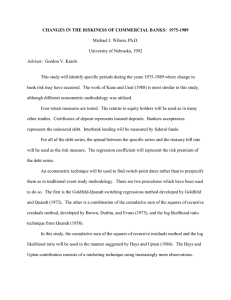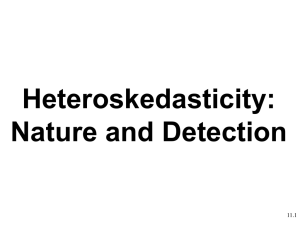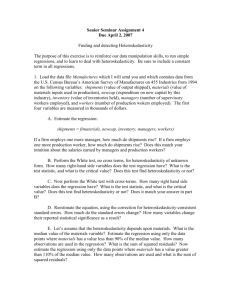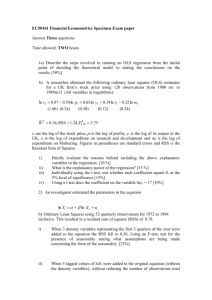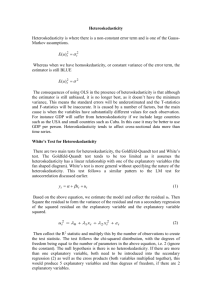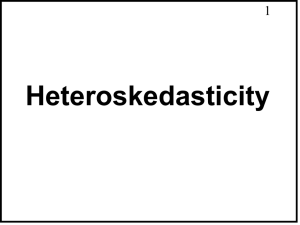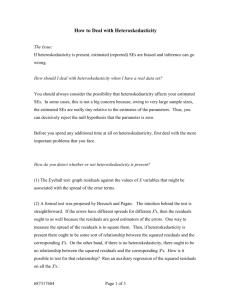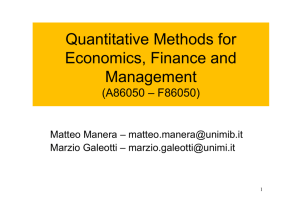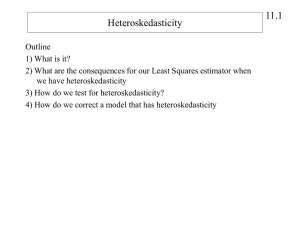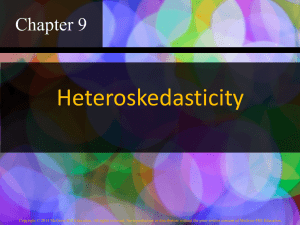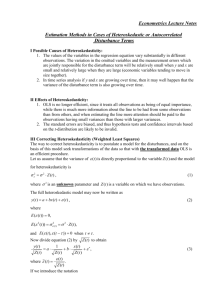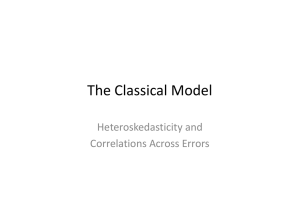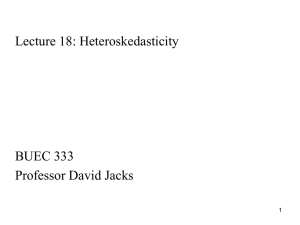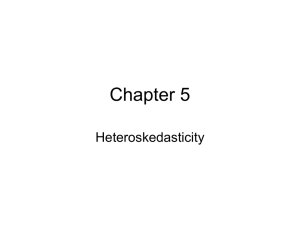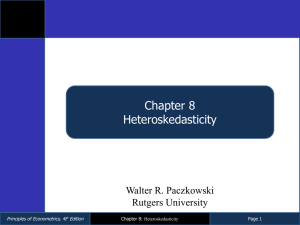Lecture 8_15 - Högskolan Dalarna
advertisement
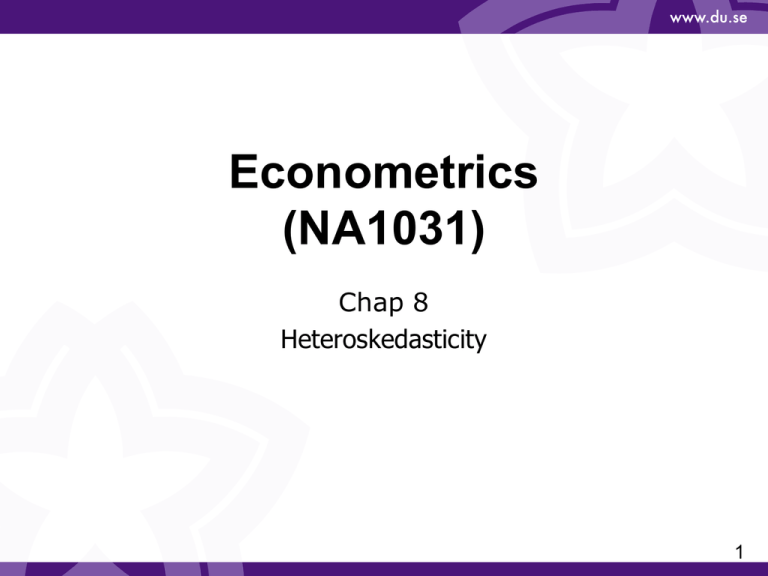
Econometrics (NA1031) Chap 8 Heteroskedasticity 1 Heteroskedasticity • When the variances for all observations are not the same, we have heteroskedasticity • The random variable y and the random error e are heteroskedastic • Conversely, if all observations come from probability density functions with the same variance, homoskedasticity exists, and y and e are homoskedastic 2 FIGURE 8.1 Heteroskedastic errors 3 Heteroskedasticity • When there is heteroskedasticity, one of the least squares assumptions is violated: E (ei ) 0 var(ei ) 2 cov(ei , e j ) 0 • Replace this with: var( yi ) var(ei ) h( xi ) where h(xi) is a function of xi that increases as xi increases 4 FIGURE 8.2 Least squares estimated food expenditure function and observed data points 5 Consequences • There are two implications of heteroskedasticity: 1. The least squares estimator is still a linear and unbiased estimator, but it is no longer best • There is another estimator with a smaller variance 2. The standard errors usually computed for the least squares estimator are incorrect • Confidence intervals and hypothesis tests that use these standard errors may be misleading 6 Detecting Heteroskedasticity • If the errors are homoskedastic, there should be no patterns of any sort in the residuals • If the errors are heteroskedastic, they may tend to exhibit greater variation in some systematic way • This method of investigating heteroskedasticity can be followed for any simple regression • In a regression with more than one explanatory variable we can plot the least squares residuals against each explanatory variable, or against, , to see if they vary in a systematic way 7 FIGURE 8.3 Least squares food expenditure residuals plotted against income 8 Detecting Heteroskedasticity • We need formal statistical tests • There are several • See the text for: Breusch-Pagan test, White test, Goldfeld-Quandt test • Usually based on regressions of squared residuals on a set of explanatory variables 9 What to do if heteroskedasticity is present? • Report heteroskedasticity-consistent or heteroskedasticity-robust or White standard errors • Check the model specification, for example a logarithmic transformation may help • Generalized least squares (GLS) 10 Heteroskedasticity robust standard errors • White’s estimator for the standard errors helps avoid computing incorrect interval estimates or incorrect values for test statistics in the presence of heteroskedasticity • It does not address the other implication of heteroskedasticity: the least squares estimator is no longer best • Failing to address this issue may not be that serious • With a large sample size, the variance of the least squares estimator may still be sufficiently small to get precise estimates • To find an alternative estimator with a lower variance it is necessary to specify a suitable variance function • Using least squares with robust standard errors avoids the need to specify a suitable variance function 11 GLS var ei i2 2 xi Say: Transform the model: 1 xi ei yi β1 β2 x x xi xi i i yi xi ei 1 * * * y , xi1 , xi 2 = xi , ei = xi xi xi xi * i New model: yi* β1 xi*1 β 2 xi*2 ei* ei 1 1 2 2 var e var var e x i i Note: x xi x i i This is also called weighted least squares (WLS) * i 12 Stata • Start Stata mkdir C:\PE cd C:\PE copy http://users.du.se/~rem/chap08_15.do chap08_15.do doedit chap08_15.do 13 Assignment • Exercise 8.12 page 326 in the textbook. 14
